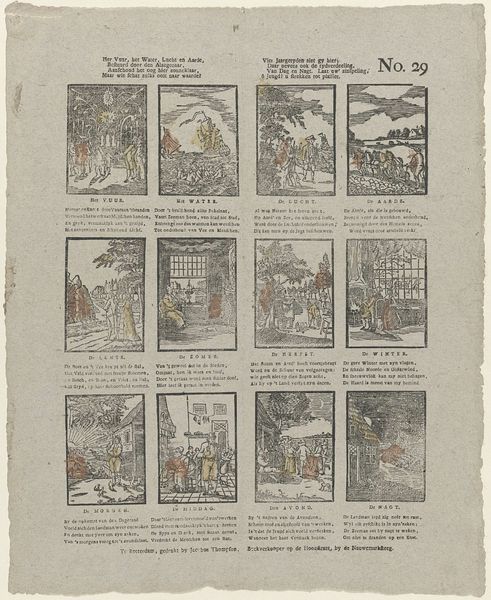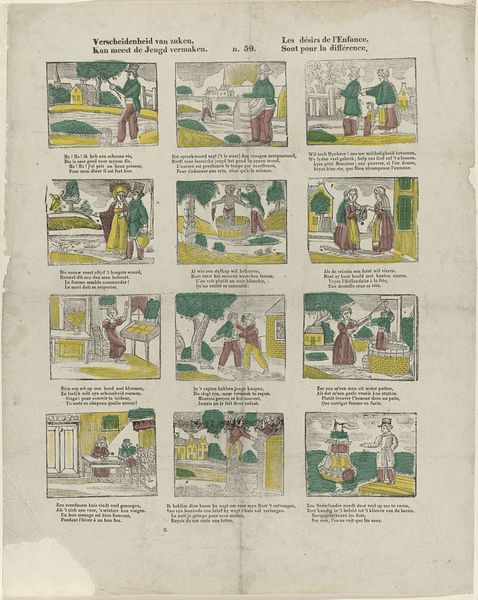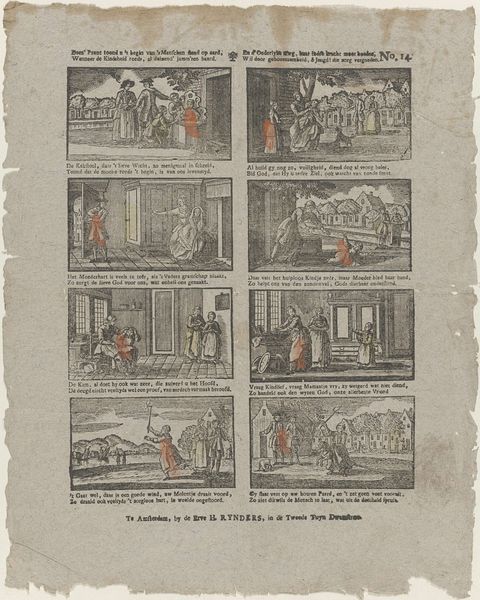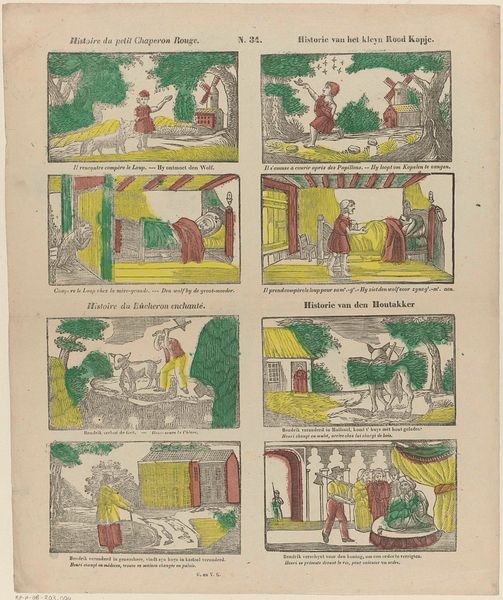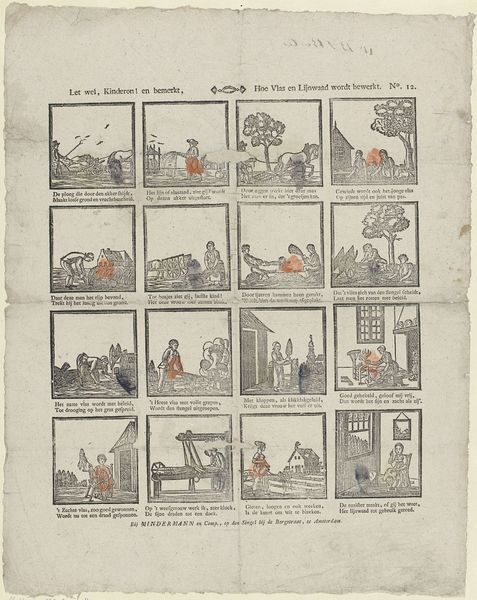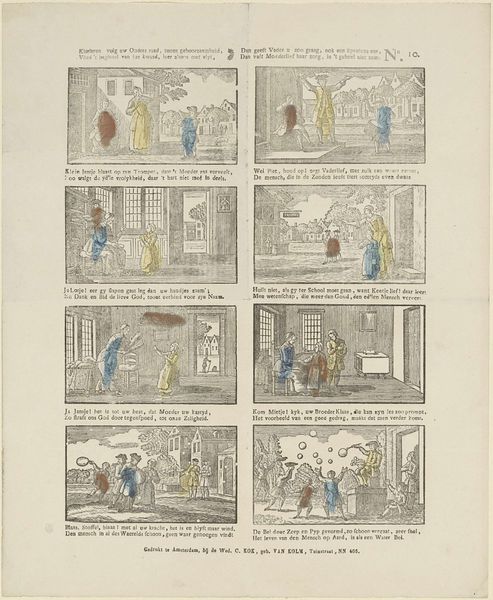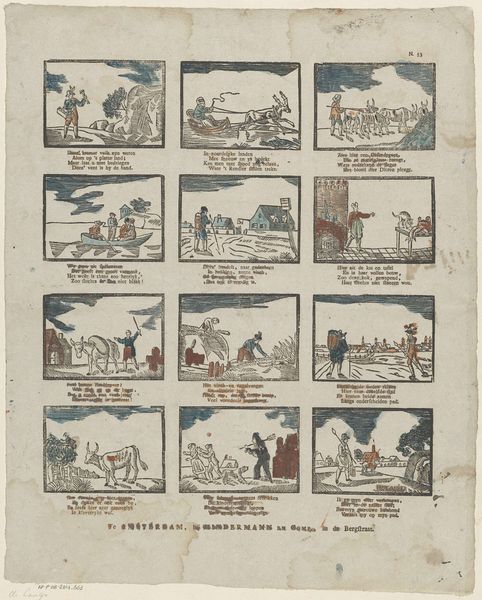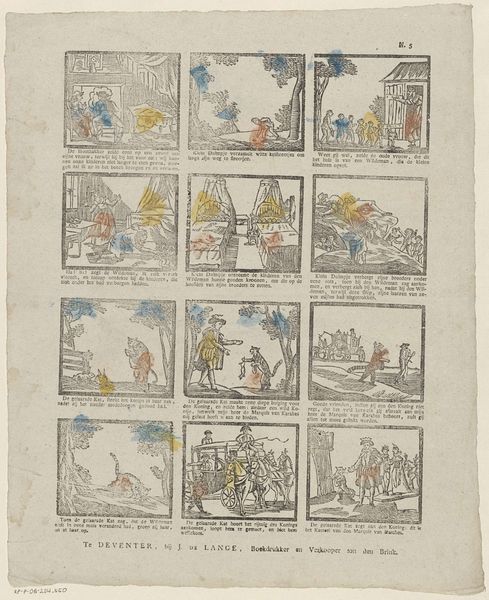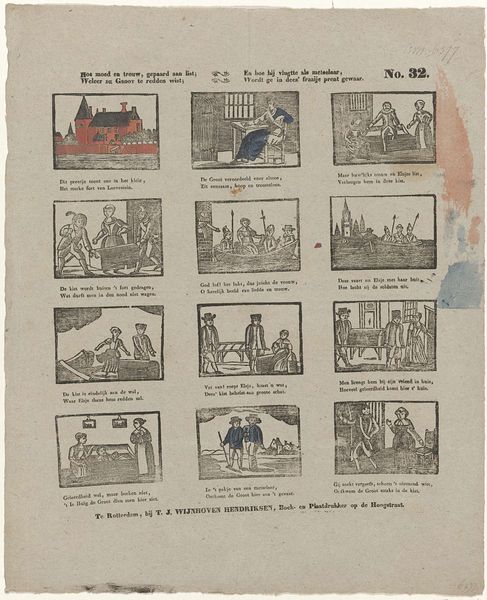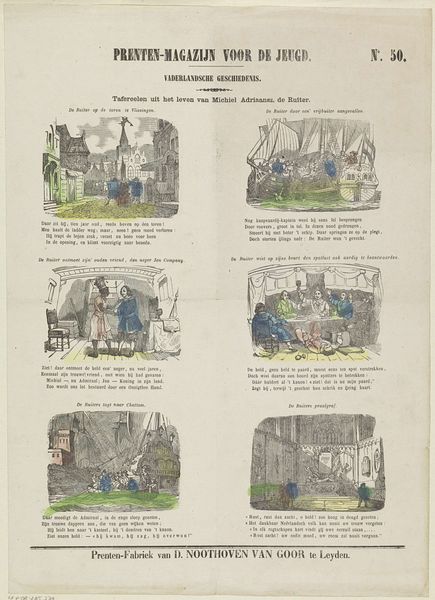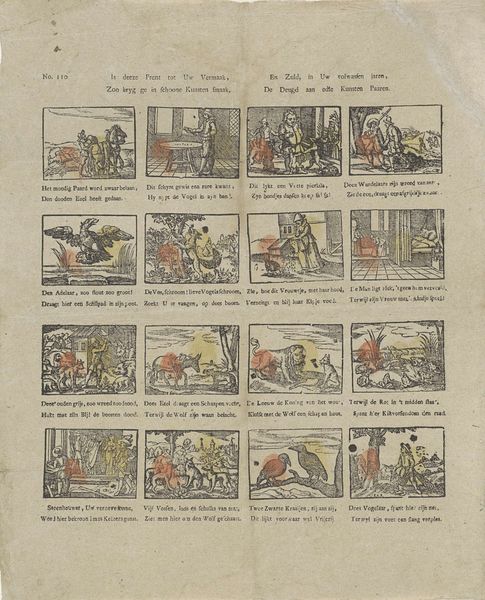
graphic-art, print, etching
#
graphic-art
#
comic strip sketch
#
narrative-art
#
dutch-golden-age
# print
#
etching
#
landscape
#
cityscape
#
genre-painting
Dimensions: height 310 mm, width 340 mm
Copyright: Rijks Museum: Open Domain
Curator: Today, we’re looking at a print called "Landmansleven," created between 1830 and 1855. It’s housed at the Rijksmuseum. This etching offers a glimpse into rural life during that period in the Netherlands. Editor: It feels almost like a comic strip, doesn’t it? Six little vignettes stitched together, each one depicting a stage of agricultural life. I’m struck by the detail achieved with such simple materials. Curator: Exactly. Each scene captures a particular moment in the cycle of agrarian life, from plowing the fields to bringing in the harvest. The work presents an idealised version of country life, very common in genre painting of the period. You notice the light touch of hand-colouring adding charm to a scene of daily labors. Editor: That's what grabbed me: how it renders the toil of it all. Etching itself is such a labor-intensive process, the care given to depicting each scene - the sheep shearing, the harvesting. It speaks to me of value placed on these forms of work and the means and motions of traditional living. Curator: Definitely. It's a reminder of the central role of agriculture in Dutch society. But note too that it romanticizes it. There's no depiction of the real poverty that existed in this rural areas during that time, no social commentary in this art; instead we get an idealistic glimpse into an industrious, harmonious society. Editor: And yet the materials speak too: the humble print, accessible, reproductive; the hints of color applied carefully to elevate the surface and its story-telling. There’s a beautiful contrast between the simplicity of the execution and the density of information conveyed. The narrative speaks as much about materiality as about labor. Curator: It shows us that art had a social purpose. These kinds of works played a role in shaping national identity. They were also didactic, aimed at creating good citizens and reflecting moral principles and, to your point, Editor, celebrating manual labour! Editor: A fusion of form, function, and social commentary bound together by modest, tangible materials. I like its economy and accessibility; art from the soil to reach everyday hands and minds.
Comments
No comments
Be the first to comment and join the conversation on the ultimate creative platform.
